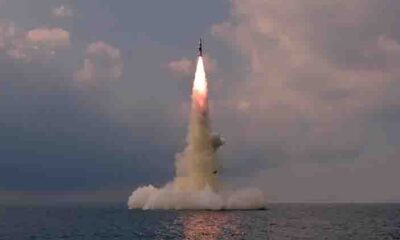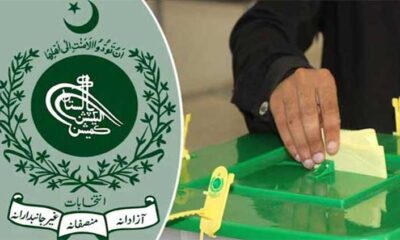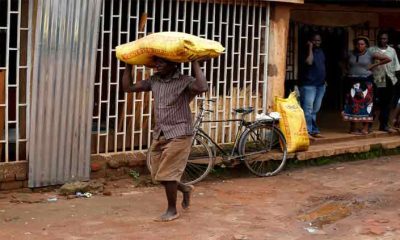Thousands who survived the earthquakes that struck Turkiye and Syria a week ago are pondering what comes next. While many have been evacuated from the devastated region, others are staying by wrecked homes and as the search for missing loved ones continues.
Rescuers found a woman alive 174 hours after the first quake struck, but reports of rescues were coming less often as the time since the quake reaches the limits of the human body’s ability to survive without water, especially in freezing temperatures.
The magnitude 7.8 and 7.5 quakes struck nine hours apart in southeastern Turkiye and northern Syria on Feb. 6. They killed over 35,000, with the toll expected to rise considerably as search teams find more bodies, and reduced much of towns and cities inhabited by millions to fragments of concrete and twisted metal.
On Monday rescuers from Istanbul pulled a woman named Naide Umay from a collapsed building in the hard-hit city of Antakya. Earlier, a 40-year-old woman was rescued from the wreckage of a 5-story building in the town of Islahiye, in Gaziantep province, while a 60-year old was rescued in Besni, in Adiyaman province.
A week after the quakes hit, many people were still without shelter in the streets. Some survivors were still waiting in front of collapsed buildings for the bodies of their loved ones to be retrieved.
In the village of Polat, in Malatya province, some 100 kilometers (62 miles) from the epicenter, almost no houses were left standing. Residents were trying to salvage refrigerators, washing machines and other goods from wrecked homes.
Resident Zehra Kurukafa said not enough tents had arrived, forcing up to four families to share the tents that were available.
“We sleep in the mud, all together with two, three, even four families. There aren’t enough tents,” she said.
In the city of Adiyaman, 25-year-old Musa Bozkurt was waiting for a vehicle to transport him and others to the city of Afyon, in western Turkiye.
“We’re going away but we have no idea what will happen when we get there” Bozkurt said. “We have no goal. Even if there was (a plan) what good will it be after this hour? I no longer have my father or my uncle. What do I have left?” he said.
Fuat Ekinci, a 55-year-farmer, was reluctant to leave his home in rural Adiyaman for Afyon despite the destruction, saying he didn’t have the means to live elsewhere and had fields that need to be tended.
“Those who have the means are leaving, but we’re poor,” he said. “The government says, go and live there a month or two. How do I leave my home? My fields are here, this is my home, how do I leave it behind?”
Volunteers from across Turkiye have mobilized to help millions of survivors, including a group of volunteer chefs and restaurant owners who served traditional food such as beans and rice and lentil soup for survivors in downtown Adiyaman.
Other volunteers continued with the rescue efforts. But Eduardo Reinoso Angulo, a professor at the Institute of Engineering at the National Autonomous University of Mexico said the likelihood of finding people alive was “very, very small now.”
The lead author on a 2017 study involving deaths inside buildings struck by earthquakes, Reinoso said that the odds of survival for people trapped in wreckage fall dramatically after five days, and is near zero after nine days, although there have been exceptions.
David Alexander, a professor of emergency planning and management at University College London, agreed, saying the window for pulling people alive from the rubble is “almost at an end.”
But, he said, the odds were not very good to begin with. Many of the buildings were so poorly constructed that they collapsed into very small pieces, leaving very few spaces large enough for people to survive in, Alexander said.
“If a frame building of some kind goes over, generally speaking we do find open spaces in a heap of rubble where we can tunnel in,“ Alexander said. “Looking at some of these photographs from Turkiye and from Syria, there just aren’t the spaces.”
Wintery conditions further reduce the window for survival. Temperatures in the region have fallen to minus 6 degrees Celsius (21 degrees Fahrenheit) overnight.
“The typical way the body compensates for hypothermia is shivering — and shivering requires a lot of calories,” said Dr. Stephanie Lareau, a professor of emergency medicine at Virginia Tech. “So if somebody’s deprived of food for a number of days and exposed to cold temperatures, they’re probably going to succumb to hypothermia more rapidly.”
Many in Turkiye blame faulty construction for the vast devastation, and authorities have begun targeting contractors allegedly linked with buildings that collapsed.
At least 131 people were under investigation for their alleged responsibility in the construction of buildings that failed to withstand the quakes, officials said.
Turkiye has introduced construction codes that meet earthquake-engineering standards, but experts say the codes are rarely enforced.
In Syria, U.N. Under-Secretary-General for Humanitarian Affairs Martin Griffiths said that the international community has failed to provide aid.
Visiting the Turkish-Syrian border Sunday, Griffiths said Syrians are “looking for international help that hasn’t arrived.”
“We have so far failed the people in northwest Syria. They rightly feel abandoned,” he said, adding, “My duty and our obligation is to correct this failure as fast as we can.”
The earthquake death toll in Syria’s northwestern rebel-held region has reached 2,166, according to the rescue group the White Helmets. The overall death toll in Syria stood at 3,553 on Saturday, although the 1,387 deaths reported for government-held parts of the country hadn’t been updated in days. Turkiye’s death toll was 31,643 as of Sunday.
In the Syrian capital of Damascus, the head of the World Health Organization warned that the pain will ripple forward, calling the disaster an “unfolding tragedy that’s affecting millions.”
“The compounding crises of conflict, COVID, cholera, economic decline, and now the earthquake have taken an unbearable toll,” Tedros Adhanom Ghebreyesus said.
Post Views: 86

 Fashion3 months ago
Fashion3 months ago
 Sports3 months ago
Sports3 months ago
 Sports3 months ago
Sports3 months ago
 Fashion2 months ago
Fashion2 months ago
 World3 months ago
World3 months ago
 pakistan3 months ago
pakistan3 months ago
 pakistan3 months ago
pakistan3 months ago




















